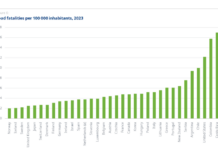Accessibility in urban transport systems is greatly influenced by design choices. These choices can either facilitate or hinder the mobility of various user groups, particularly women, persons with disabilities, older adults, and caregivers. In Nairobi, Kenya, a city with a population of over four million people, most daily trips involve walking, cycling, or public transport. However, unequal infrastructure investments have created significant challenges that limit people’s access. Like many cities, Nairobi’s transport systems were not initially designed with inclusion or gender considerations. Efforts to formalize the city’s public transport through a planned bus rapid transit (BRT) system, enhanced non-motorized transport networks, and transit-oriented development pave the way for a more inclusive, accessible Nairobi.
The post Advancing Gender Inclusion in Nairobi’s Transport System first appeared on Institute for Transportation and Development Policy.









